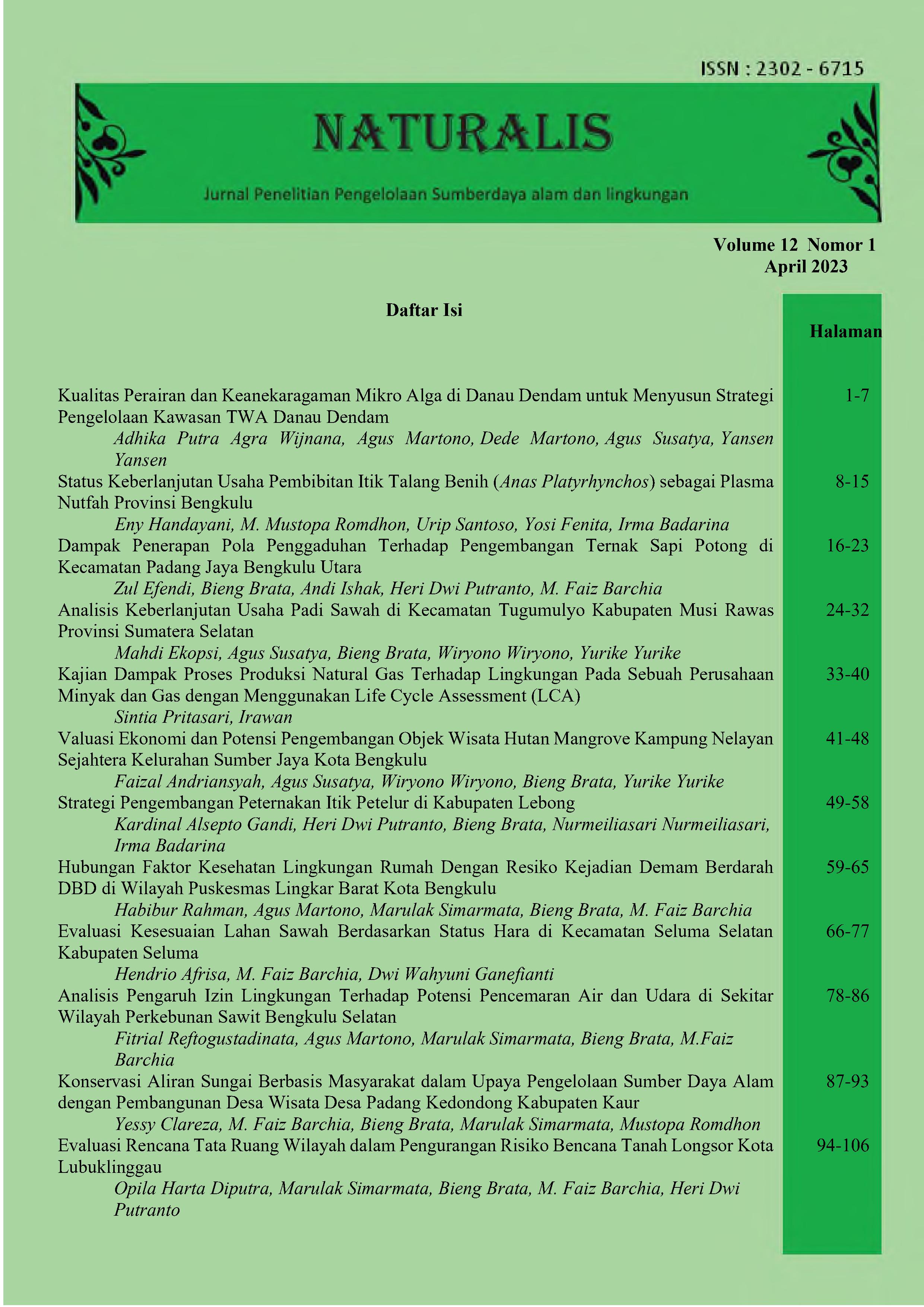Hubungan Faktor Kesehatan Lingkungan Rumah Dengan Resiko Kejadian Demam Berdarah DBD di Wilayah Puskesmas Lingkar Barat Kota Bengkulu
Abstract
Dengue Hemorrhagic Fever (DHF) is an environment-based disease (physical, biological and sausage) that is widely found in tropical and sub-tropical regions whose transmission is through mosquito bites of Aedes aegypti and Aedes albopictus species. Efforts to prevent the transmission of this disease by breaking the mosquito breeding chain itself are by carrying out 3M activities (Draining, Closing, Burying) plus and suppressing other transmission factors so that it is closely related to behavior. The purpose of this study was to determine the relationship between dengue incidence to knowledge, the condition of the Water Reservoir (TPA) and the presence of Aedes sp mosquito larvae in the West Ring Health Center area of Bengkulu City. This research is a quantitativeresearch with a type of analytical research. The results showed that the three variables had a significant relationship with the presence of Aedes sp larvae, namely the level of knowledge with a p value of 0.044, the condition of water reservoirs with a p value of 0.03 and the presence of mosquito larvae with a p value of 0.035. While the most influential / most dominant factor is knowledge, followed by the existence of larvae and water reservoirs, with Odd Ratio values (1.399; 0.623; and 0.535).
Keywords: Dengue fevver, factors, home environmental health
Full text article
Authors
Copyright (c) 2023 Habibur Rahman, Agus Martono, Marulak Simarmata, Bieng Brata, M.Faiz Barchia

This work is licensed under a Creative Commons Attribution-ShareAlike 4.0 International License.
An author who publishes in Naturalis agrees to the following terms:
Author retains the copyright and grants the journal the right of first publication of the work simultaneously licensed under the Creative Commons Attribution-ShareAlike 4.0 License that allows others to share the work with an acknowledgement of the work's authorship and initial publication in this journal
The author is able to enter into separate, additional contractual arrangements for the non-exclusive distribution of the journal's published version of the work (e.g., post it to an institutional repository or publish it in a book) with the acknowledgement of its initial publication in this journal. The author is permitted and encouraged to post his/her work online (e.g., in institutional repositories or on their website) prior to and during the submission process, as it can lead to productive exchanges, as well as earlier and greater citation of the published work (See The Effect of Open Access).
Submission of a manuscript implies that the submitted work has not been published before (except as part of a thesis or report, or abstract); that it is not under consideration for publication elsewhere; that its publication has been approved by all co-authors. If and when the manuscript is accepted for publication, the author(s) still hold the copyright and retain publishing rights without restrictions. Authors or others are allowed to multiply an article as long as not for commercial purposes. For the new invention, authors are suggested to manage its patent before published. The license type is CC-BY-SA 4.0.
Naturalis is licensed under a Creative Commons Attribution-ShareAlike 4.0 International License.

